
Karl Weatherly/Photodisc/Getty Images
The waters surrounding Hawaii are home to a startling variety of fish, many of them little known elsewhere. One example is the monchong. A deepwater fish, it's prized by many restaurateurs because its flavor and relative scarcity allow them to charge a premium price. Its pale flesh is rich and mild in flavor, lending it to various cooking methods.
About Monchong
Monchong is the name used in Hawaii for two deep sea pomfret: sickle pomfret and lustrous pomfret, two closely related species. Fishermen from Japan refer to monchong as "utopia fish." Monchong live in deep water; they are usually taken at depths of 900 to 1200 feet as a by-catch by tuna longline fishermen. Monchong can grow up to 40 pounds in weight, with market specimens typically averaging 12 pounds or more. The flesh is pale with a rosy pink hue, and like mackerel or salmon, it's rich in omega-3 fatty acids.
Grilling and Broiling
Monchong is usually sold in pieces, since the individual fish are relatively large. Good fishmongers cut the fillets into portions of consistent size and thickness, so they'll cook evenly. The monchong's flesh is relatively fatty, so it can withstand the high temperatures of grilling and broiling without drying out. Brush the portions lightly with oil and season them, or use a marinade to impart flavors and oil the surface. Grill on direct heat or broil the portions for four to five minutes per side, depending on thickness, until the flesh in the middle turns pale white.
Baking and Pan-Frying
Baking portions of monchong is another healthy preparation method. Arrange the fillets in a baking dish or on a sheet pan, seasoning them as needed. Bake them at 400 degrees F for 12 to 15 minutes, until just cooked through. Serve them with a fruit salsa or other light sauce. For a tasty if less virtuous option, dust the fillets with seasoned flour or breadcrumbs and pan-fry them in a small quantity of oil. The rich flesh remains moist and delicate inside the crisp, golden coating.
Other Cooking Methods
Like other rich-fleshed fish, monchong are mostly cooked by dry heat methods. However, it's also tasty when other techniques are used. Monchong makes excellent sashimi, although it is sometimes prone to parasites. You can also poach it in broth, white wine or other flavorful liquids, or try steaming it in the Asian manner on a bed of aromatic vegetables. The flavor of poached or steamed monchong is especially delicate, which you can complement with a mild sauce or contrast with a spicy or acidic one.
Related Articles

How to Cook Kingklip
How to Cook Seasoned Keta Salmon
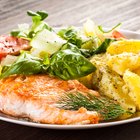
How to Cook a Turbot Fillet
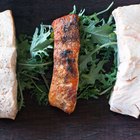
How to Cook Sea Trout

How Long & What Temperature Is It to ...
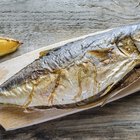
How to Cook Yellowtail

How to Cook Tilefish

How to Pan Fry Grouper

How to Poach Sea Bass
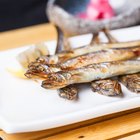
How to Cook Shishamo Fish
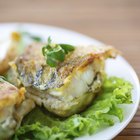
How to Cook Fresh Walleye
How to Cook Chilean Sea Bass Cheeks
How to Cook Cobia
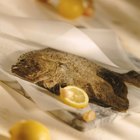
How to Roast Whole Flounder
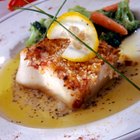
How to Pan Fry Sea Bass

How to Cook Steelhead Trout

How to Cook Swai With Breading
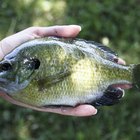
How to Cook Bluegill Fish

How to Boil Conch in the Shell

How to Cook Rockfish Fillets
References
Writer Bio
Fred Decker is a trained chef and prolific freelance writer. In previous careers, he sold insurance and mutual funds, and was a longtime retailer. He was educated at Memorial University of Newfoundland and the Northern Alberta Institute of Technology. His articles have appeared on numerous home and garden sites including GoneOutdoors, TheNest and eHow.
Photo Credits
Karl Weatherly/Photodisc/Getty Images